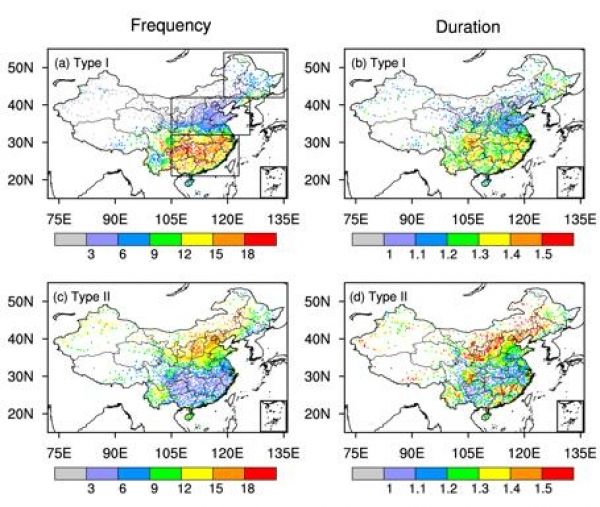Flash drought is a rapidly intensifying water deficit process accompanied by high temperatures in a short period of time. Recently, heat extremes have become more frequent in a warming climate, and substantially increased the occurrence of flash drought, which has severely threatened crop yields and water supply.
Dr. WANG Linying and Professor YUAN Xing, from the Institute of Atmospheric Physics, Chinese Academy of Sciences, used in-situ observations and reanalysis datasets to explore the long-term variability and trends of two types of flash drought. Type I flash drought is high-temperature driven, combined with increased evapotranspiration (ET) and decreased soil moisture; while type II flash drought is initialized by a lack of rainfall, and combined with decreased ET and warmer temperatures. They found that both types of flash drought have increased significantly in the past 30 years, but with a two-fold greater increase for Type I compared with Type II.
They further examined the spatial distribution characteristics of flash drought under two different physical mechanisms and the connection with seasonal drought, and uncovered some interesting findings, as explained by Dr. WANG.
Read more at Institute of Atmospheric Physics, Chinese Academy of Sciences
Image: Spatial distribution of the frequency and duration of two types of flash drought. (Credit: Institute of Atmospheric Physics, Chinese Academy of Sciences)


